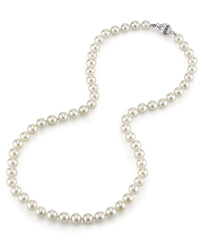The popular myth that oysters form pearls from a single grain of sand is a bit of intriguing folklore, but without merit. In fact, oysters are incredibly adept at secreting sand that regularly gets into its shells in waters laden with sand. On the other hand, the notion that it takes a foreign particulate, irritant, or even organism to trigger an oyster to form a pearl is true.
Research asserts that not a grain of sand, but an invading organism (like a tiny drill worm) as well as a shard of mantle shell or tissue is the genesis of a pearl. The invader or foreign material becomes lodged in the oyster causing it irritation. Unable to dislodge the matter through secretions, the oyster covers it with layer upon layer of
aragonite (nacre) forming a pearl. In essence, pearl-development is the oyster's way of neutralizing a threat.
Upon rare occasions people have actually discovered pearls while eating oysters or even while beach combing. Such pearls are definitely rare but also rarely valuable. Most opt to except as a keepsake that people often make into unique pendants to commemorate their unusual find. Quahog pearls, are found relatively often and we see many reports of found quahog pearls over at the pearl-guide.com forums:
I found a purple pearl in a clam I was eating-The Quahog Thread Quahog pearl found in bowl of steamers Quahog Lavender Pearl While the media loves to hype the value of these pearls they really don't carry any monetary value, although the shades of purple are lovely.
While many vacationing consumers are attracted to the idea of harvesting their own pearl from an oyster and fashioning it into a piece of jewelry, they might be shocked to learn that such practices are manufactured souvenirs. Sellers take oysters and place a low value freshwater pearl in the oyster and sell it most often to tourists who believe the pearl formed there naturally. While these pearls can certainly commemorate a special occasion, they are not regarded as pearls of value. Kids seem to love the idea of opening an oyster to find a pearl and it's a great way to teach them how real pearls form.
Unless you're of royal lineage or very wealthy true natural pearls will likely be out of reach, instead most will own cultured pearls. You can find out more about how
cultured pearls are formed by clicking here. Purchasing an exquisite cultured pearl may not be as enchanting as plucking a priceless pearl from the sea with one's own hand, but the quality available in cultured pearls today consistently trumps natural pearls.

